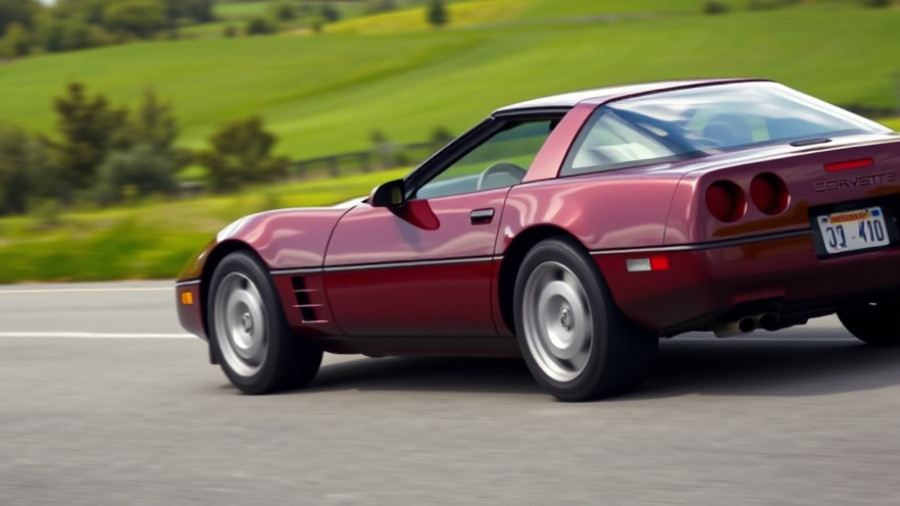
The Rise of the C4 Corvette: A Game Changer in the 1980s
The Chevrolet Corvette has always been a symbol of American automotive ingenuity, but the C4 generation, produced from 1984 to 1996, marked a turning point that redefined this iconic sports car. The shift from the C3 to the C4 was not just a change in aesthetics; it was a radical technological leap that aligned with the demands of a new era.
Revolutionizing Sports Car Engineering
One of the standout features of the C4 Corvette was its innovative uniframe construction, a major departure from the traditional body-on-frame design seen in earlier models. This new design imbued the C4 with enhanced rigidity and improved handling, characteristics that would become synonymous with modern sports cars. Coupled with lightweight materials like aluminum and composite plastics, the C4 was not just lighter but adapted perfectly to the aerodynamics of the 1980s, boasting a drag coefficient of 0.34.
Aesthetic and Technological Brilliance
The C4's sleek, angular design is often credited with setting the stage for future sports car aesthetics. Pop-up headlights and a distinctive clamshell hood not only enhanced its futuristic look but also provided necessary functional advantages. The introduction of a Targa roof panel offered the open-top driving experience without the drawbacks of traditional convertibles. Inside, the focus shifted to digital instrumentation, which was a significant leap in dashboard technology for the time, although critiques of its usability led to adjustments in later models.
Engine Evolution: From Modest to Mighty
The performance of the C4 Corvette evolved significantly over its lifespan. Initially powered by the 5.7L L83 V8 engine producing 205 hp, it did not take long for enhancements to follow. The introduction of the Tuned Port Injection (TPI) L98 V8 in 1985 marked a substantial increase, pushing power to 230 hp. But it was the introduction of the LT1 in 1992 that truly solidified the C4 Corvette's place in the performance pantheon, delivering 300 hp. Moreover, the C4’s standout ZR-1 model, armed with the revolutionary LT5 engine, boasted 375 hp in its initial year and later 405 hp, making it a serious competitor against established European sports cars.
Special Editions and Cultural Impact
The C4 Corvette wasn’t merely a performance vehicle; it became a cultural phenomenon, influencing movies, media, and the general perception of American muscle. Special editions like the 1986 Indianapolis 500 Pace Car and the 1996 Grand Sport helped keep the Corvette in the public eye, each model carrying unique features that appealed to collectors and enthusiasts alike. The allure of the ZR-1 captured imaginations, solidifying its status as the 'King of the Hill' in performance standards.
Why the C4 Stands Out Today
Despite the nostalgia surrounding earlier models, the C4 Corvette stands uniquely positioned between classic and modern cars. It’s more accessible than ever, with a vast pool of vehicles on the market, making it an attractive option for enthusiasts and first-time buyers alike. With ongoing support for parts and repairs, C4 Corvettes remain a popular choice for racers and collectors, ensuring that the legacy of the C4 continues.
The Future of the Corvette Legacy
As we look forward to future developments in Corvette technology, the foundation laid by the C4 remains influential. From fuel efficiency comparisons to new car reliability ratings, the engineering advancements made during this generation have set performance benchmarks that are still relevant today. The energy across both the automotive sector and gearhead communities reflects an enduring appreciation for what the C4 represented.
While enthusiasts await upcoming models and innovations, understanding the impact of the 1980s Corvette helps illuminate the trajectory of automotive design and performance standards. The C4 Corvette not only defined a decade but continues to inspire future generations to keep pushing the envelope of automotive engineering.
 Add Row
Add Row  Add
Add 




Write A Comment